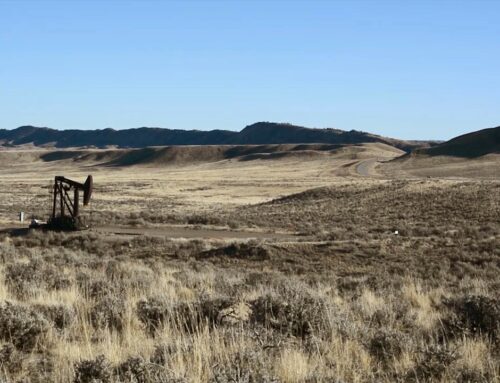Biomass Research and Development Initiative Fact Sheet
The Biomass Research and Development Initiative (BRDI) provides grants to companies, universities, and government research centers to research and develop (R&D) and demonstrate new ways to refine various types of feedstocks into biofuels or biobased chemicals and products. The program was originally created in the Biomass Research and Development Act of 2000 and was later modified and extended in the 2002, 2008, and 2014 farm bill energy titles.[1] Compared to the 2008 farm bill, the 2014 farm bill provided significantly less mandatory funding of $3 million annually for FY2014-18 and discretionary (optional) funding of $20 million per year.[2]
BRDI is funded though the energy title of the farm bill. The farm bill, renewed approximately every five years, is a wide ranging piece of legislation that funds everything from nutrition assistance programs and broadband internet to agricultural subsidies for the production of crops such as corn and soybeans. More specifically, the energy title of the farm bill, first introduced in 2002, provides grants, loans, and other subsidies to energy efficiency, biofuels, and bioenergy (heat and power) projects. In total, the 2014 farm bill energy title’s programs are projected to cost taxpayers $879 million from FY14-23.[3] Facilities receiving taxpayer support range from universities receiving research and development grants to investigate new uses for biomass sources such as wood and agricultural residues (through BRDI) to large, established corn ethanol companies receiving grants for annual production of biofuel. Other energy title projects funded by taxpayers include:
- the collection, storage, harvest, and transportation of biomass sources to bioenergy or biofuels facilities
- anaerobic digesters that create heat and power from animal waste
- grants and loans to individuals or companies for wind, solar, geothermal, energy efficiency, and other renewable energy projects (through REAP)
- federally-backed loan guarantees for “next generation” biofuels facilities that produce biofuels other than corn ethanol
While intended to support the next generation of biofuels derived from non-food sources and other renewable forms of energy, the farm bill energy title has also spent taxpayer dollars on the mature corn ethanol industry, supporting biomass sources with numerous unintended consequences, and even paying for updates to farmers’ irrigation equipment and grain dryers.
Boards and Committees Overseeing the Biomass Initiative
BRDI is administered by two government agencies, the Department of Agriculture (USDA) and the Department of Energy (DOE). A Biomass Research and Development Board was created in 2000 to help facilitate interagency cooperation. In addition, a Technical Advisory Committee (TAC), made up of 30 to 40 members from industry, academia, nonprofits, and local government, provides advice and strategic planning to the government on the direction of the program.[4] Currently, representatives of companies benefiting from the development of the biofuels and bioenergy industry, like Dupont and Enerkem serve on the Committee.[5]
Types of Biomass Projects Receiving Taxpayer Funds
About two-thirds of the $140.5 million awarded from 2009 to 2016 through BRDI subsidized the following types of biomass: general R&D for multiple types of biomass, woody biomass, and sorghum. Other types of biomass receiving grants include perennial grasses, vegetable oil, energy crops, algae, corn starch and corn oil, and municipal solid waste. Additional funding was awarded, but due to a lack of detail on USDA and DOE’s websites about individual grants all project costs are not included in Table 1.
Table 1: Types of Biomass Receiving Grants through USDA’s Biomass Research and Development Initiative
|
Type of Biomass
|
Total Payments, 2009-2016
|
Pct. of Total
|
|---|---|---|
|
Various types/general research and development projects
|
$41,756,065
|
30%
|
|
Woody biomass
|
$27,358,315
|
19%
|
|
Sorghum
|
$21,873,291
|
16%
|
|
Perennial grasses (like switchgrass and miscanthus)
|
$19,350,000
|
14%
|
|
Vegetable oil
|
$12,078,932
|
9%
|
|
Energy crops
|
$6,500,000
|
5%
|
|
Algae
|
$5,500,000
|
4%
|
|
Corn starch and corn oil
|
$4,250,000
|
3%
|
|
Municipal solid waste
|
$1,800,000
|
1%
|
| Total | $140,466,603 | 100% |
Corn Ethanol Grant Recipients
Corn-based biofuels have received nearly forty years of generous federal subsidies, tax breaks, and government mandates. Yet, the industry is still able to qualify for additional subsidies within the farm bill’s energy title that were intended to be targeted toward next-generation biofuels produced from non-food crops. BRDI is no different. In FY2012, Quad County Corn Processors (QCCP) received a $4.25 million grant to retrofit its corn starch ethanol facility in Iowa to produce byproducts that could be marketed to the biodiesel industry and feed markets.[6] QCCP is also planning to produce cellulosic ethanol from corn kernel fiber, a livestock feed source.[7] Despite looming questions on the relationship between corn-based biofuels recipients and the program’s intended goal of developing the next generation of biofuels, federal subsidies were still awarded through BRDI.
Woody Biomass Grant Recipients
Woody biomass is another biofuel and bioenergy feedstock that is eligible for generous subsidies through several different government programs, including at least eight of 15 farm bill energy title programs. Under BRDI, three private companies, four universities, and one USDA research center received $28 million in grants to develop woody biomass into biopower and biofuels. Recipients include the following entities:
- Cooper Tire & Rubber Co. (OH): To optimize production and quality of guayule rubber, a hardwood perennial shrub grown in the Southwest, to use in tire formulations, for biopower, and conversion to jet fuel precursors.[8]
- Domtar Paper Company, LLC (SC): To build “a demonstration plant to convert low-value byproducts and wastes from paper mills into higher-value sugar, oil, and lignin products.”[9]
- Itaconix (NH): To “develop production of polyitaconic acid from northeast hardwood biomass… [to use as a] replacement for petrochemical dispersants, detergents, and super-absorbents.”[10]
- State University of New York (NY): “provide comprehensive life cycle economic and environmental understanding of the production of willow and forest biomass for the use in heat and power, combined heat and power, and biofuels.”[11]
- University of California-Riverside (CA): “to convert poplar to ethanol and polyurethane via pretreatment and lignin polymer synthesis.”[12]
- University of Minnesota (MN): To “assess sustainability of forest-based biofuel feedstocks within the Lake States region.”[13]
- University of Montana (MT): “This project will focus on ponderosa pine and mixed, dry conifer forests to quantify ecological and economic opportunities… [for] forest-based bioenergy.”[14]
- U.S. Forest Service, Rocky Mountain Research Station (MT): To “develop an integrated approach to investigate biomass feedstock production, logistics, conversion, distribution and end use centered on using advanced conversion technologies at existing forest industry facilities.”[15]
Conclusion
While the Biomass Research and Development Initiative was intended to spur the development of next-generation biofuels derived from non-food sources, some federal funding has been used to benefit the mature corn ethanol industry. Other taxpayer dollars are spent on forms of biomass that not only already receive subsidies via several other federal programs but can also create unintended consequences and future taxpayer liabilities. For these reasons, BRDI should be eliminated.
[1]http://webarchives.cdlib.org/sw1vh5dg3r/http://ers.usda.gov/FarmBill/2008/Titles/TitleIXEnergy.htm
[2] http://docs.house.gov/billsthisweek/20140127/CRPT-113hrpt-HR2642-SOM.pdf
[3] http://cbo.gov/sites/default/files/cbofiles/attachments/hr2642LucasLtr.pdf
[4] https://biomassboard.gov/committee/committee.html
[5] http://www.biomassboard.gov/committee/members.html
[6] https://energy.gov/articles/agriculture-and-energy-departments-announce-new-investments-drive-innovations-biofuels-and
[7] http://www.quad-county.com/index.cfm?show=10&mid=4
[8] https://energy.gov/articles/agriculture-and-energy-departments-announce-new-investments-drive-innovations-biofuels-and
[9] http://www.biomassboard.gov/pdfs/fy10_brdi_selections.pdf
[10] http://www.biomassboard.gov/pdfs/joint_solicitation_2009_dl.pdf
[11] https://nifa.usda.gov/2016-biomass-research-and-development-initiative-awards
[12] https://nifa.usda.gov/2016-biomass-research-and-development-initiative-awards
[13] http://www.biomassboard.gov/pdfs/joint_solicitation_2009_dl.pdf
[14] https://nifa.usda.gov/2016-biomass-research-and-development-initiative-awards
[15] http://www.biomassboard.gov/pdfs/fy10_brdi_selections.pdf
Related Posts
Most Read
Recent Content
Our Take
Dec 17, 2025 | 5 min readLetter
Dec 15, 2025 | 10 min read
Stay up to date on our work.
Sign up for our newsletter.
"*" indicates required fields










